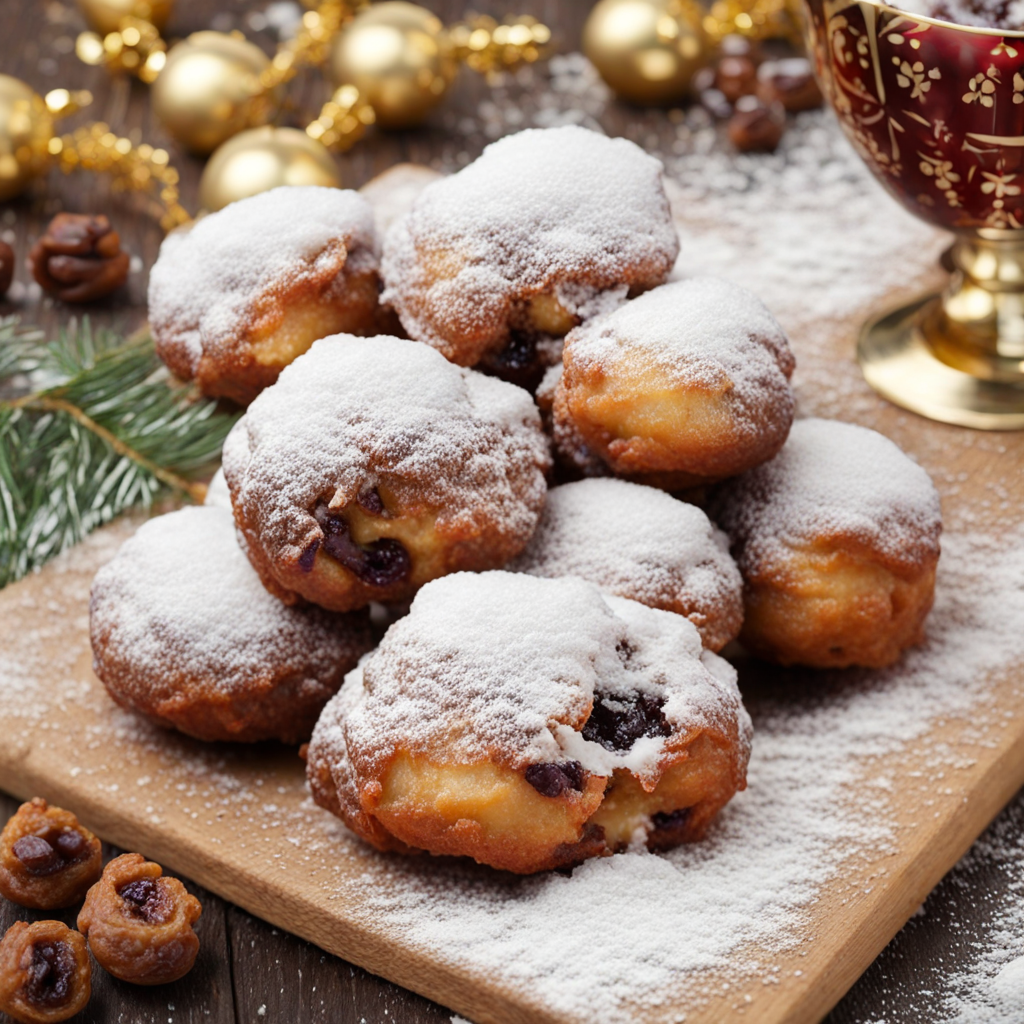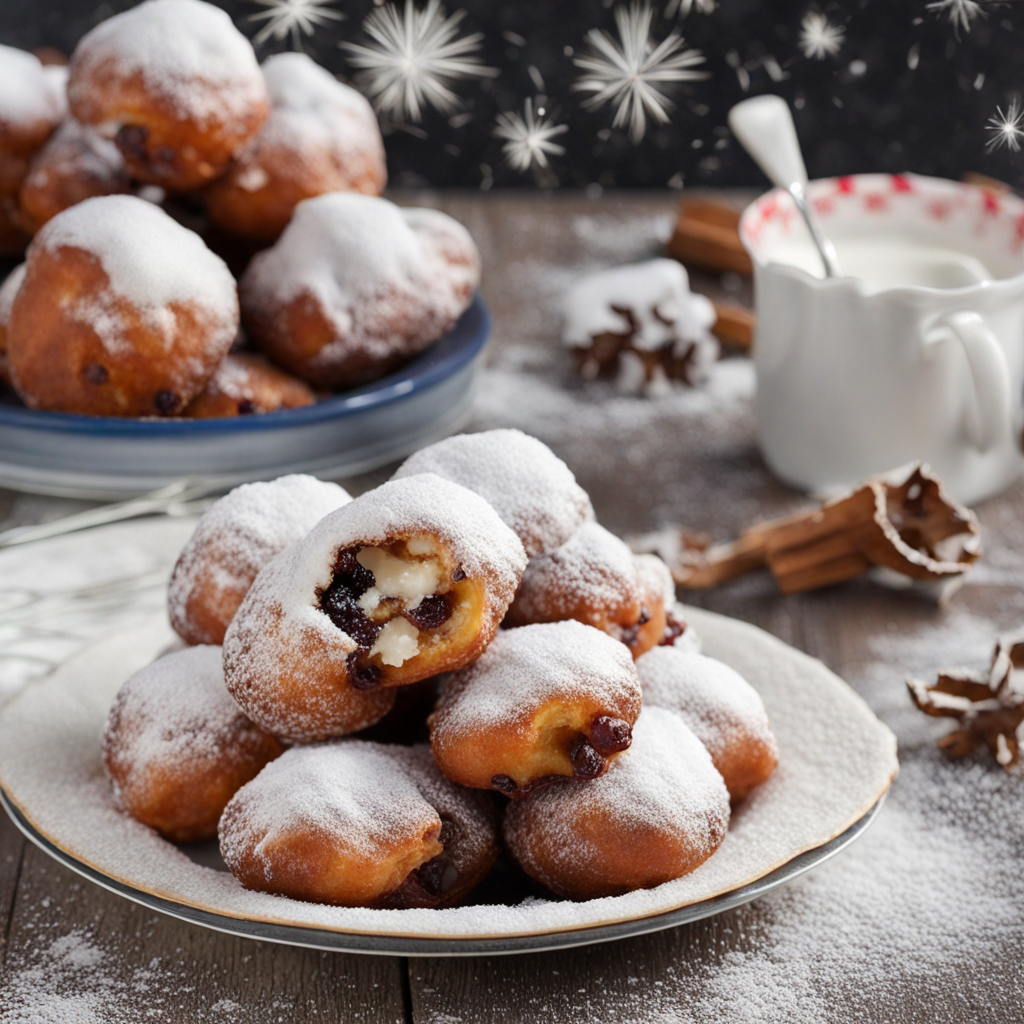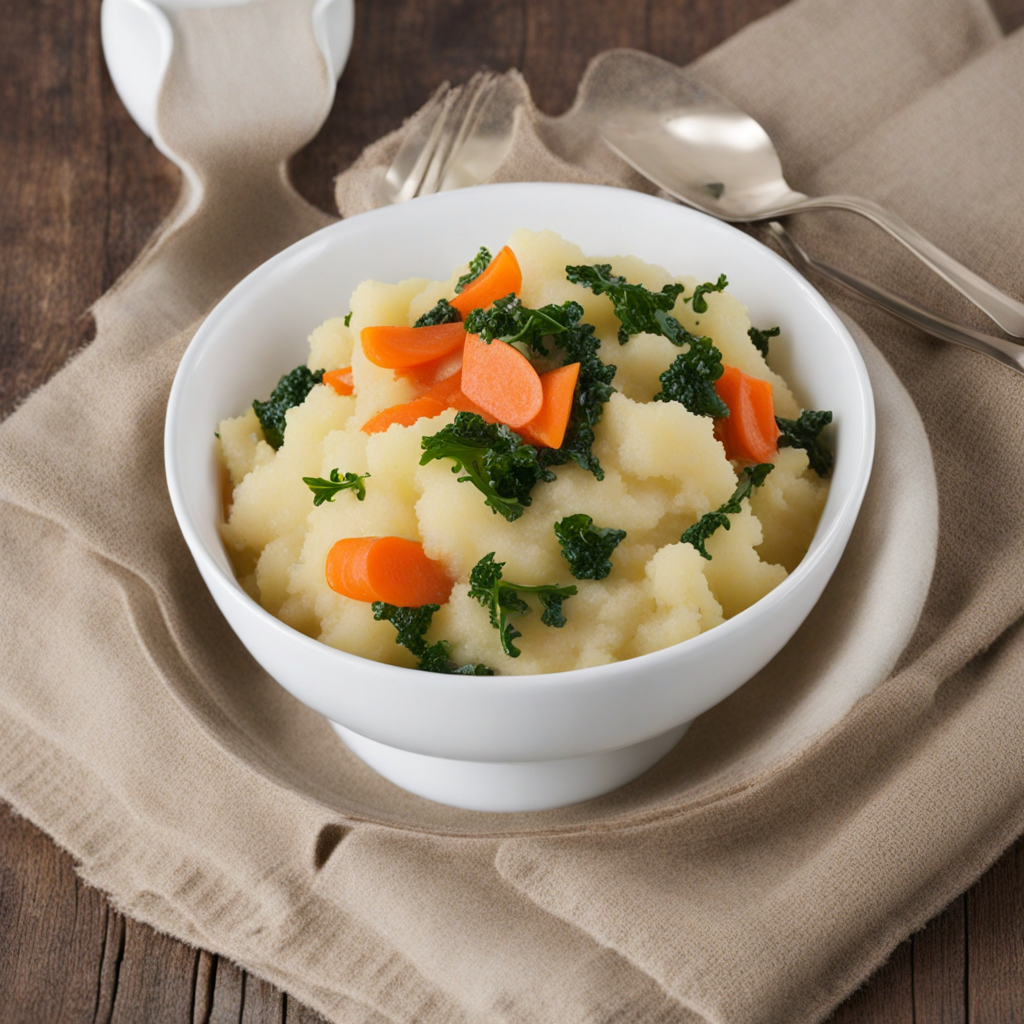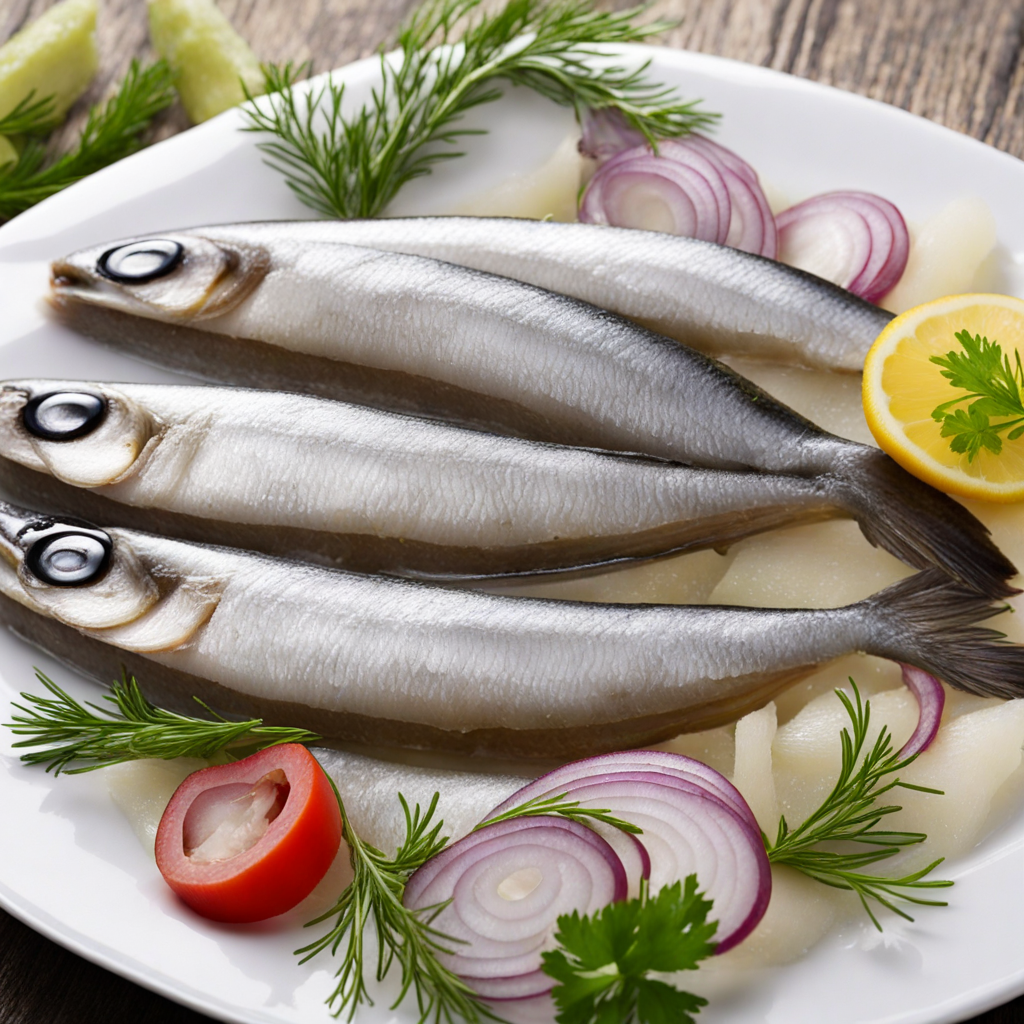Oliebollen
Oliebollen, often referred to as "Dutch doughnuts," are a beloved traditional treat in the Netherlands, particularly enjoyed during the New Year celebrations. Their name translates to "oil balls," reflecting the cooking method that involves deep-frying. The history of oliebollen dates back to the 16th century, with origins believed to be linked to a Germanic tradition of frying dough in hot oil. They were initially made to be consumed during winter festivities, symbolizing the end of the old year and the welcoming of the new. The flavor profile of oliebollen is delightful and comforting. They are typically slightly sweet, with a rich, airy texture that is both fluffy and crispy. The dough is often enhanced with various ingredients, such as raisins, currants, or apple pieces, which add a fruity note and additional moisture. The outer layer is crispy due to the frying process, while the inside remains soft and tender. When dusted with powdered sugar, each bite becomes an indulgent experience, as the sweetness complements the subtle flavors of the dough and any added ingredients. Preparation of oliebollen begins with creating a yeast-based dough. The key ingredients include flour, yeast, milk, eggs, sugar, and salt. The process begins by activating the yeast in warm milk, allowing it to bubble and rise. This mixture is then combined with flour, eggs, sugar, and salt, resulting in a thick, sticky batter. Once mixed, the dough is left to rise until it has doubled
How It Became This Dish
Oliebollen: A Sweet Dive into Dutch History Oliebollen, often translated as "oil balls," are deep-fried dough treats that have become a beloved part of Dutch culinary tradition, particularly during the festive season. These delectable delights, resembling doughnuts, are typically enjoyed during New Year's celebrations and are often served with powdered sugar. However, their history is much richer and more complex than their simple ingredients suggest. Origins of Oliebollen The origins of oliebollen can be traced back to the Middle Ages, with theories suggesting that they were influenced by a variety of cultural exchanges. The earliest references to similar fried dough can be found in ancient Roman texts, where recipes for fried cakes made from wheat flour and honey were documented. However, it is believed that the precursor to oliebollen came from the Germanic tradition of frying dough in fat. The word "olie" is Dutch for "oil," and "bol" means "ball," which aptly describes the shape and cooking method of these treats. In the 16th century, oliebollen began to gain popularity in the Netherlands. The Dutch had a penchant for fried foods, and the technique of frying dough in oil became a staple in the culinary repertoire. The use of oil for frying not only added flavor but also allowed for preservation, making it a practical choice for households in a time before refrigeration. Cultural Significance Oliebollen are steeped in cultural significance, particularly as a symbol of celebration and the passage of time. Traditionally, they are associated with the New Year, embodying the spirit of renewal and the hope for a prosperous year ahead. The act of eating oliebollen on New Year's Eve is a cherished Dutch custom, with families often gathering to enjoy them while watching fireworks and celebrating with loved ones. The history of oliebollen is also intertwined with the Dutch tradition of "old year’s eve" festivities, known as "Oudejaarsavond." As the clock strikes midnight, signaling the arrival of the New Year, it is customary to indulge in oliebollen, marking the transition from the old year to the new. This practice is thought to be a way of warding off evil spirits, a belief rooted in ancient pagan customs that sought to ensure good fortune in the coming year. Development Over Time As with many traditional foods, the recipe for oliebollen has evolved over the centuries. Early versions were simple, made from basic ingredients such as flour, water, and yeast. However, as trade routes expanded and ingredients became more accessible, variations began to emerge. By the 17th century, the addition of spices like cinnamon and nutmeg, as well as fruits such as raisins and currants, became popular. These additions not only enhanced the flavor of oliebollen but also reflected the increasing influence of globalization on Dutch cuisine. The 19th century saw further development in the preparation and presentation of oliebollen. Street vendors began to sell them at fairs and during festive occasions, making them even more accessible to the public. This commercialization of oliebollen helped solidify their place in Dutch culture, as families began to associate the treat with celebration and community gatherings. In the early 20th century, oliebollen became a staple at New Year's markets and celebrations throughout the Netherlands. The advent of the modern culinary movement led to the experimentation with different variations, including the use of various fillings such as apple, almond paste, and even chocolate. The traditional oliebollen recipe began to diversify, with some opting for a lighter dough or incorporating sparkling wine into the mixture for added flavor. Oliebollen Today Today, oliebollen are enjoyed not only in the Netherlands but also in various Dutch communities around the world. The treat has become emblematic of Dutch culture, with bakeries and food stalls dedicated to making them during the holiday season. In recent years, there has been a resurgence of interest in traditional foods, leading to a renaissance of oliebollen in both artisanal and gourmet forms. Modern-day oliebollen can be found in numerous variations, from the traditional spiced and fruit-filled versions to contemporary interpretations that incorporate exotic flavors and ingredients. Food festivals and local markets often feature oliebollen competitions, where bakers showcase their best creations, further solidifying the treat’s status in Dutch culinary heritage. Conclusion Oliebollen, with their rich history and deep cultural significance, encapsulate the essence of Dutch celebrations. From their origins in medieval frying traditions to their modern-day status as a festive treat, these sweet dough balls have traversed centuries, evolving with the times while remaining steadfast in their role as symbols of joy and togetherness. As people gather to enjoy oliebollen, they partake in a culinary tradition that connects them to their past and to one another. Whether enjoyed at a festive gathering, a street market, or in the comfort of home, oliebollen continue to bring sweetness and warmth to the hearts of those who celebrate with them, embodying the spirit of the New Year and the hope it brings.
You may like
Discover local flavors from Netherlands







